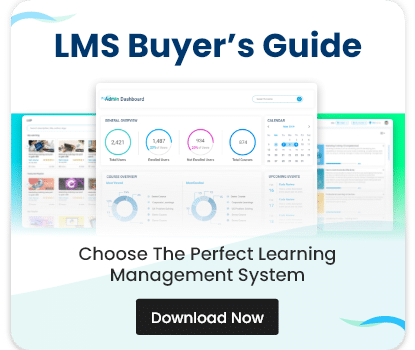Teaching isn’t, and hasn’t been for a long time, simple repetition and memorization. The eLearning industry, given its online nature, has always been ahead of the curve with regards to normalizing these teaching methods and developing them further, and the need to create engaging content has never been higher.
What follows are a number of points you should follow when creating dynamic, engaging content.
Know your audience
The importance of knowing your audience inside out when creating engaging content cannot be overstated – these are the people you want to engage! You will need to know what motivates them, how they spend their time and how they like to communicate.
Creating engaging content is all about finding the best way of communicating with your audience. Some steps to follow are:
All of this information can be gathered through a combination of surveys, focus groups and observation.
This may sound obvious, but there is no way you will know that your content is completely relevant unless you have already carried out an audience analysis.
Irrelevant content = boring content. It is so much harder these days to keep audiences stimulated – everything they could possibly want to know is at their fingertips. Fill the gaps in their knowledge with engaging content that speaks to them and solves a problem and they will come back for more.
Think about layout and design
Creating engaging content isn’t just about knowledge transfer, it’s about design and pacing too. You’re content might be the most intellectually engaging topic in the world, but with eLearning if you don’t choose the right delivery method then this can easily be lost.
If you don’t have any experience graphic design then it may be worth talking to a graphic designer. The content has to look good or else the learners will disengage early on. Infographics and striking images are key to drawing attention, as well as providing useful visual representations and cues.
Screens are read 25% lower than the printed word, so be sure to break your text down into small bite sized chunks. Nobody wants to have to read an essay that only makes one point, and the truth is probably no one will! Cut out the flab and make sure everything is relevant.
Learning paths allow trainers to set an order to courses and learning material which guide them towards a specific goal. It is important to bear this sequencing flow in mind when designing courses.
There’s a theory – narrative theory – which posits that we as humans learn to understand the world as a series of stories, each with a definite beginning, middle and end. Everything from your career to relationships can be seen through this lens, and the ability to engage with material is boosted considerably if the learner engages with the story.
Aside from this stories are a great way to add life and color (metaphorical of course) to your material. It’s easier to remember the content if it is framed in the context of a narrative as learners can immediately relate to characters and plot.
Understand what medium the content will be delivered on
The content in series of slides being used to support a classroom-based lesson will be hugely different from a gamification-based class.
Paradiso LMS is responsive and can be viewed on any device. When creating content this should be at the forefront of your mind. How will it look on a smartphone? How will it look on a tablet?
Make sure the knowledge sticks
However if you periodically check that what they are learning is sticking, then you can not only gauge the effectiveness of your eLearning content but also help learners to reengage with information they should be taking on board. Use mini quizzes like multiple choice or drag and drop to refresh the knowledge and keep it at the front of the learner’s mind.
It’s no use creating all of this lovely engaging content unless you can be sure that it is all being absorbed by the learners. Don’t leave it all for one final exam – this puts a lot of pressure on the learner and makes the final exam much more terrifying.
There are so many other ways in which you can ensure that the content you produce is dynamic and engaging, but if you follow these steps then the others will come with time and experience.

















